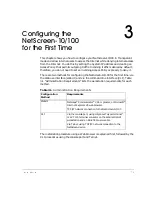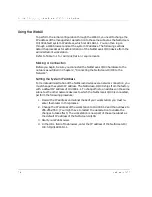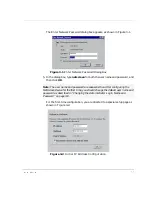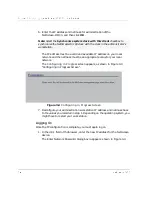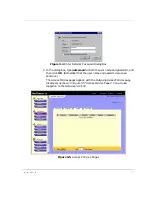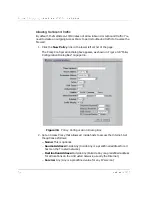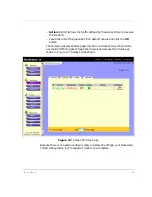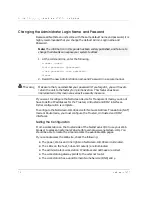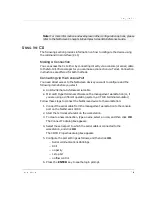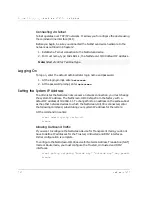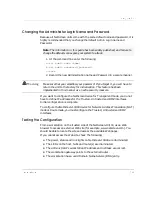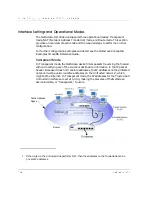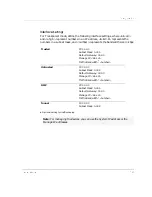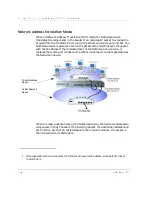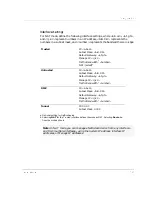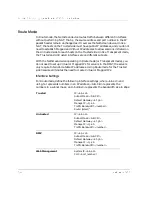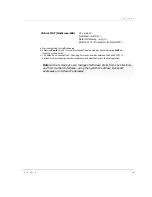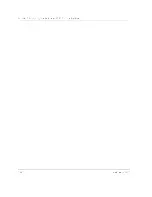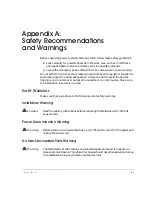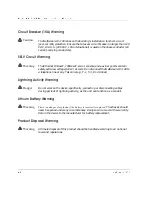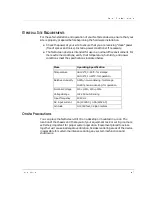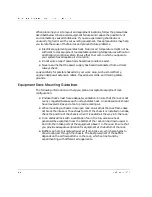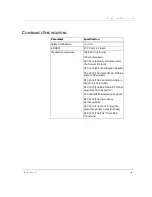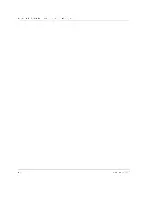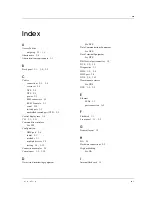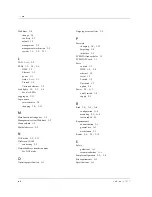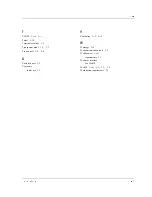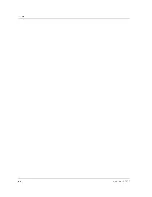
8VLQJWKH&/,
,QVWDOOHU·V*XLGH
,QWHUIDFH6HWWLQJV
For NAT mode, define the following interface settings, where <a.b.c.d>, <e.f.g.h>,
and <i.j.k.l> represent numbers in an IP address, <A.B.C.D> represents the
numbers in a subnet mask, and <number> represents the bandwidth size in kbps:
Trusted
IP: <a.b.c.d>
Subnet Mask: <A.B.C.D>
Default Gateway: <e.f.g.h>
Manage IP: <i.j.k.l>
Traffic Bandwidth
a
: <number>
NAT: (select)
b
a. Optional setting for traffic shaping
b. Selecting NAT for the Trusted interface defines the mode as NAT. Selecting Route de-
fines the mode as Route.
Untrusted
IP: <a.b.c.d>
Subnet Mask: <A.B.C.D>
Default Gateway: <e.f.g.h>
Manage IP: <i.j.k.l>
Traffic Bandwidth
: <number>
DMZ
IP: <a.b.c.d>
Subnet Mask: <A.B.C.D>
Default Gateway: <e.f.g.h>
Manage IP: <i.j.k.l>
Traffic Bandwidth
: <number>
Tunnel
IP: 0.0.0.0
Subnet Mask: 0.0.0.0
Note: In NAT mode, you can manage a NetScreen device from any interface—
and from multiple interfaces—using the System IP address, interface IP
addresses, or Manage IP addresses.
Summary of Contents for NetScreen-10 Series
Page 1: ...1 76 5 1 QVWDOOHU V XLGH 9HUVLRQ 3 1 5HY...
Page 4: ...LY 1HW6FUHHQ...
Page 14: ...KDSWHU DUGZDUH DQG 6RIWZDUH HVFULSWLRQ 1HW6FUHHQ...
Page 20: ...KDSWHU RQQHFWLQJ WKH 1HW6FUHHQ WR WKH 1HWZRUN 1HW6FUHHQ...
Page 38: ...KDSWHU RQILJXULQJ WKH 1HW6FUHHQ IRU WKH LUVW 7LPH 1HW6FUHHQ...
Page 44: ...SSHQGL 6DIHW 5HFRPPHQGDWLRQV DQG DUQLQJV 1HW6FUHHQ...
Page 48: ...QGH 1HW6FUHHQ...

